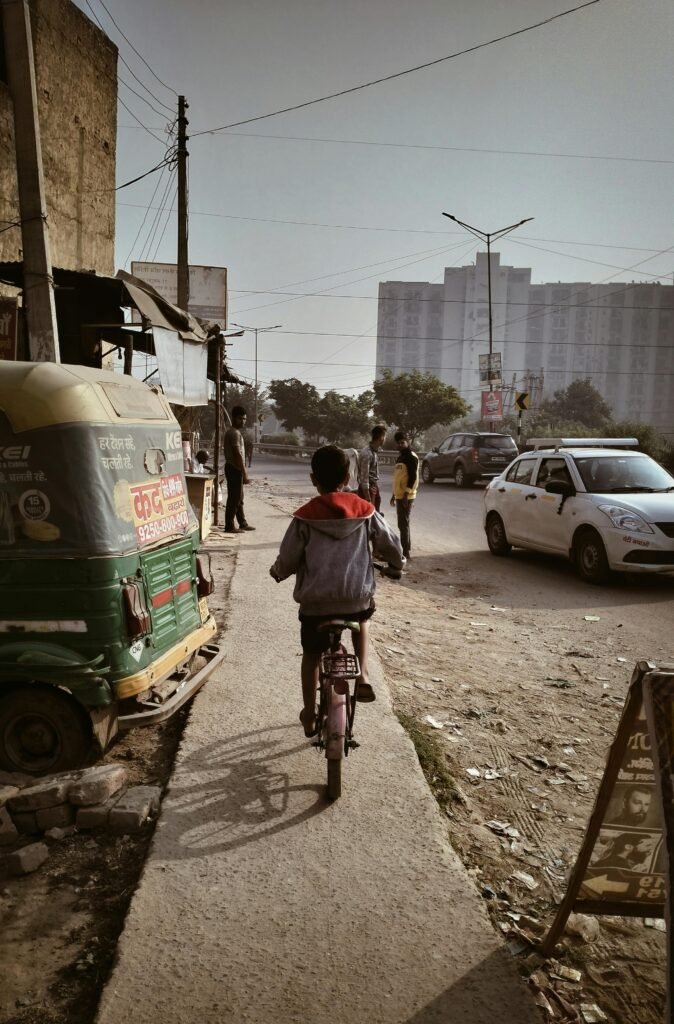Maintaining your dirt bike is crucial to keep it running smoothly and performing at its best. But do you know which parts are essential for proper dirt bike maintenance? In this article, we will explore the must-have parts that every dirt bike owner should have. From air filters to brake pads, we will cover everything you need to ensure the longevity and optimal performance of your beloved machine. So, buckle up and get ready to discover the key components that will help you keep your dirt bike in top shape.
Air Filter
The air filter is a crucial component of a dirt bike’s engine system. Its primary function is to prevent dirt, dust, and debris from entering the engine, ensuring clean airflow and protecting the engine from damage. Regular maintenance and cleaning of the air filter are necessary to optimize engine performance and prolong its lifespan.

This image is property of images.pexels.com.
Importance of air filters in dirt bikes
Air filters play a vital role in maintaining the overall health and performance of a dirt bike’s engine. By filtering out particles and impurities from the incoming air, they prevent these contaminants from entering the engine and causing potential damage. Clean air is essential for efficient combustion and optimal engine performance, ensuring that your dirt bike runs smoothly and efficiently.
Signs of a dirty air filter
It is essential to regularly inspect and clean or replace your air filter to avoid potential engine problems. Some signs that indicate a dirty air filter include reduced engine power, poor throttle response, black smoke from the exhaust, and difficulty starting the bike. If you notice any of these signs, it is a clear indication that your air filter needs attention.
How to clean and maintain an air filter
Cleaning and maintaining your dirt bike’s air filter is a relatively simple process that can greatly improve engine performance and prevent costly repairs. Start by removing the air filter cover and carefully taking out the filter. Gently tap the filter to remove loose dirt and debris, then clean it using an air filter cleaner or mild soap and water. Rinse the filter thoroughly and allow it to dry completely before re-oiling it with an appropriate air filter oil. Finally, reinstall the filter and air filter cover, ensuring a secure fit.
Spark Plug
The spark plug is another critical component of a dirt bike’s engine system. It provides the spark necessary to ignite the fuel-air mixture in the combustion chamber, allowing the engine to run. Regular inspection and maintenance of the spark plug are essential to ensure reliable engine performance and prevent issues such as misfires or poor fuel efficiency.
Why spark plugs are essential for dirt bike maintenance
Spark plugs play a crucial role in the overall performance and efficiency of a dirt bike’s engine. A properly functioning spark plug ensures efficient combustion and optimal power delivery. It also contributes to fuel efficiency and smooth acceleration. By regularly maintaining and replacing spark plugs when necessary, you can avoid engine performance issues and keep your dirt bike running at its best.
Signs of a faulty spark plug
There are several signs that indicate a faulty spark plug in your dirt bike. These include difficulty starting the bike, rough idling, poor acceleration, and a decrease in overall engine performance. Additionally, if you notice a significant decrease in fuel efficiency or black, sooty deposits on the spark plug electrode, it is a clear indication that the spark plug needs attention.
How to replace a spark plug
Replacing a spark plug is a relatively simple task that can be done with basic tools. Start by locating the spark plug, usually found near the top of the engine cylinder. Disconnect the spark plug wire and use a spark plug socket to loosen and remove the old spark plug. Before installing the new spark plug, ensure that it is the correct type and gap size recommended for your dirt bike’s engine. Insert the new spark plug and tighten it using the spark plug socket. Finally, reconnect the spark plug wire, and you’re good to go.
Oil Filter
The oil filter is a vital component in a dirt bike’s lubrication system. It helps remove contaminants and particles from the engine oil, ensuring clean and smooth operation of the engine. Regularly changing and maintaining the oil filter is crucial for preserving the engine’s longevity and performance.
Importance of oil filters in dirt bikes
Oil filters are essential for maintaining the overall health and performance of a dirt bike’s engine. They ensure that the engine oil remains clean and free from harmful contaminants that can cause wear and damage. By trapping dirt, metal particles, and other impurities, oil filters help prolong the life of the engine and improve its performance and efficiency.
Signs of a clogged oil filter
There are several indicators of a clogged oil filter in your dirt bike. These include low or fluctuating oil pressure, increased engine noise, poor performance, and overheating. If you notice any of these signs, it is essential to inspect and change the oil filter promptly to prevent potential engine damage.

This image is property of images.pexels.com.
How to change and maintain an oil filter
Changing the oil filter in your dirt bike is a relatively straightforward process that should be done during regular oil changes. Begin by locating the oil filter, typically located near the engine. Use an oil filter wrench to loosen and remove the old filter. Before installing the new filter, apply a thin layer of clean engine oil to the rubber gasket to ensure a proper seal. Screw on the new oil filter by hand, ensuring it is tightened securely but not overtightened. Finally, dispose of the old filter properly and refill the engine with fresh oil as recommended by the manufacturer.
Brake Pads
Brake pads are a crucial component of a dirt bike’s braking system. They provide the necessary friction to slow down or stop the bike when the brakes are applied. Regular inspection and maintenance of brake pads are vital for safe riding and optimal braking performance.
Why brake pads are crucial for dirt bike safety
Brake pads play a critical role in ensuring the safety of dirt bike riders. They are responsible for generating the friction needed to bring the bike to a stop. Worn-out or damaged brake pads can lead to decreased braking efficiency and potentially dangerous situations. By regularly maintaining and replacing brake pads when necessary, you can ensure reliable and responsive braking performance, promoting safer riding conditions.
Signs of worn-out brake pads
There are several signs that indicate worn-out or damaged brake pads in your dirt bike. These include a noticeable decrease in braking power, squealing or grinding noises when braking, a pulsating brake pedal, or a dashboard warning light indicating brake pad wear. If you notice any of these signs, it is crucial to inspect and replace the brake pads promptly to ensure safe riding conditions.
How to replace and maintain brake pads
Replacing brake pads on a dirt bike requires some mechanical knowledge and basic tools. Start by removing the brake caliper and carefully inspecting the brake pads for wear. If they are worn out or damaged, remove the old brake pads and install the new ones following the manufacturer’s instructions. Before reinstalling the brake caliper, make sure to clean it thoroughly and apply an appropriate lubricant to the slide pins. Finally, ensure that the brake pads are properly aligned and secure, and test the brakes before riding to ensure proper functionality.
Chain and Sprockets
The chain and sprockets are critical components in a dirt bike’s drivetrain system. They are responsible for transferring power from the engine to the rear wheel, enabling movement. Proper maintenance and regular inspection of the chain and sprockets are necessary to ensure smooth power delivery, prevent excessive wear, and prolong their lifespan.
Importance of a clean and properly adjusted chain
A clean and properly adjusted chain is essential for smooth power transfer and efficient dirt bike performance. A dirty or loose chain can lead to power loss, decreased acceleration, and increased wear on the chain and sprockets. By regularly cleaning, lubricating, and adjusting the chain, you can maintain optimal power delivery and reduce the risk of chain-related issues or failures.
Signs of chain and sprocket wear
There are several indicators of chain and sprocket wear in your dirt bike. These include chain slack or tightness outside the recommended range, visible signs of rust, kinks, or stretched links in the chain, and hooked or worn-down teeth on the sprockets. If you notice any of these signs, it is crucial to address them promptly to prevent further damage and ensure safe and reliable operation of your dirt bike.
How to clean, lubricate, and replace the chain and sprockets
Cleaning, lubricating, and replacing the chain and sprockets require periodic maintenance and attention. Start by cleaning the chain using a chain cleaner and a brush to remove dirt, debris, and old lubricant. Once the chain is clean and dry, apply a suitable chain lubricant, ensuring full coverage. It is also important to regularly inspect and adjust the chain tension using the bike’s adjustment mechanism or by following the manufacturer’s instructions. Additionally, if the chain or sprockets show significant signs of wear, it is necessary to replace them with new ones, following the proper installation procedures and guidelines.
Tires
Tires are crucial components that directly influence the performance and handling of a dirt bike. They provide traction, stability, and control on different terrains, and their proper maintenance is crucial for safe and enjoyable riding.
The role of tires in dirt bike performance
Tires play a vital role in determining the overall performance and handling characteristics of a dirt bike. The right tire choice, with appropriate tread pattern and compound, can enhance grip, traction, and control in various riding conditions. Tires also contribute to stability, cornering ability, and shock absorption, ensuring a smooth and enjoyable riding experience.

This image is property of images.pexels.com.
Signs of worn-out or damaged tires
Regularly inspecting your dirt bike’s tires for signs of wear and damage is crucial for safe riding. Some indicators include reduced tread depth, uneven wear patterns, cracks or cuts on the tire surface, and bulges or deformities. Additionally, if you experience decreased traction, poor handling, or instability during riding, it is a clear indication that the tires need attention.
How to inspect, change, and maintain dirt bike tires
Inspecting, changing, and maintaining dirt bike tires require regular attention and care. Start by inspecting the tires for signs of wear, damage, or low tread depth. If the tires show significant wear or damage, it is necessary to replace them with new ones that are suitable for your riding conditions. When installing new tires, ensure proper fitment, correct tire pressure as recommended by the manufacturer, and proper balancing if required. It is also essential to regularly check tire pressure, adjust as necessary, and maintain the recommended tire pressure range for optimal performance and safety.
Wheel Bearings
Wheel bearings are essential components that allow the wheels to rotate smoothly on a dirt bike. Regular maintenance and inspection of wheel bearings are vital to ensure safe and reliable riding conditions.
Why wheel bearings need regular maintenance
Wheel bearings play a crucial role in supporting the weight of the bike and enabling smooth wheel rotation. They are subjected to constant stress, dirt, and moisture while riding off-road, making regular maintenance necessary. Proper lubrication and inspection help prevent premature wear, play, or failure of the wheel bearings, ensuring safe and efficient performance.
Signs of worn-out wheel bearings
There are several signs that indicate worn-out or damaged wheel bearings on your dirt bike. These include abnormal noises, such as grinding or rumbling sounds coming from the wheels, excessive play or movement in the wheel, and irregular wheel movement or wobbling. If you notice any of these signs, it is crucial to inspect and replace the wheel bearings promptly to avoid potential accidents or wheel failure.
How to inspect, clean, and replace wheel bearings
Inspecting, cleaning, and replacing wheel bearings require some mechanical knowledge and tools. Start by removing the wheels from the dirt bike and carefully inspect the wheel bearings for signs of wear, damage, or play. If they show significant wear or damage, it is necessary to replace them with new bearings that match the specifications of your dirt bike. Clean the wheel hub and bearings thoroughly, apply an appropriate wheel bearing grease, and carefully reinstall the new bearings. Finally, reinstall the wheels, ensuring proper torque on the wheel nuts or bolts, and test for smooth and secure wheel rotation.
Fork Seals
Fork seals are critical components of a dirt bike’s front suspension system. They ensure proper sealing and lubrication of the front forks, preventing oil leakage and maintaining optimal suspension performance. Regular maintenance and inspection of fork seals are vital to ensure a smooth and controlled riding experience.
Importance of fork seals in dirt bike suspension
Fork seals play a crucial role in maintaining the integrity and functionality of a dirt bike’s front suspension system. They seal the area between the stationary and moving parts of the forks, preventing oil leakage and ensuring smooth suspension operation. A properly functioning fork seal helps maintain proper damping and suspension travel, resulting in optimal handling, control, and comfort.
Signs of leaking fork seals
Leaking fork seals can lead to decreased suspension performance, oil contamination, and potential safety hazards. Some signs that indicate leaking fork seals in your dirt bike include oil residue or dripping on the fork legs or lower tubes, reduced suspension travel, increased fork stiction or binding, and changes in the fork’s handling characteristics. If you notice any of these signs, it is crucial to address the issue promptly to prevent further damage and ensure safe riding conditions.
How to replace and maintain fork seals
Replacing and maintaining fork seals require some mechanical knowledge, specialized tools, and attention to detail. Start by disassembling the front forks and removing the old seals carefully. Clean the fork tubes thoroughly and inspect for any signs of damage, pitting, or wear. Install the new seals, ensuring proper fitment and using a suitable seal driver tool. Reassemble the front forks, fill them with the recommended suspension oil, and carefully bleed any air from the system as per the manufacturer’s instructions. Finally, test the forks for smooth operation and check for any leaks or abnormalities.
Brake Fluid
Brake fluid is a critical component of a dirt bike’s braking system. It transmits force from the brake lever to the brake calipers, enabling effective stopping power. Regular inspection and maintenance of brake fluid are essential to ensure safe and reliable braking performance.
Why brake fluid is crucial for effective braking
Brake fluid plays a vital role in converting the force applied to the brake lever into hydraulic pressure, which then activates the brake calipers. It is designed to withstand high temperatures and maintain consistent performance under various riding conditions. By regularly maintaining and replacing brake fluid, you can prevent brake fade, ensure proper brake function, and enhance overall braking performance.
Signs of low or contaminated brake fluid
There are several signs that indicate low or contaminated brake fluid in your dirt bike. These include a spongy or soft brake lever feel, increased brake lever travel, decreased braking power, or a dashboard warning light indicating low brake fluid. Contaminated brake fluid may appear dark or discolored. If you notice any of these signs, it is crucial to address the issue promptly to ensure safe braking and prevent potential accidents.
How to bleed and replace brake fluid
Bleeding and replacing brake fluid requires careful attention and adherence to proper procedures. Start by protecting surrounding areas from potential brake fluid spills or damages and ensuring that the brake fluid reservoir is clean. Begin at the caliper furthest from the brake fluid reservoir and proceed to the closest, following the recommended bleeding sequence. Use appropriate tools and techniques to bleed the brake system effectively, ensuring that all air bubbles are removed. Once the system is bled, replace the old brake fluid with new fluid that meets the manufacturer’s specifications. Finally, clean any spilled brake fluid and confirm proper brake lever feel and function before riding.
Radiator Fluid
Proper coolant levels are essential for maintaining optimal engine temperature and preventing overheating in a dirt bike. Regular inspection and replacement of radiator fluid are necessary to ensure efficient cooling and prevent potential engine damage.
The importance of proper coolant levels in dirt bikes
Coolant, also known as radiator fluid, plays a vital role in dissipating heat and maintaining optimal engine temperature. It helps prevent the engine from overheating during prolonged riding or high-performance situations. By maintaining proper coolant levels and regularly replacing it, you can ensure consistent engine cooling and prevent potential engine damage caused by overheating.
Signs of overheating and coolant leaks
There are several signs that indicate overheating or coolant leaks in your dirt bike. These include an increase in engine temperature, engine seizing or stalling, coolant leaks or puddles underneath the bike, white exhaust smoke, or sweet-smelling steam coming from the engine area. If you notice any of these signs, it is crucial to address the issue promptly to avoid potential engine damage and ensure safe riding conditions.
How to check and replace radiator fluid
Checking and replacing radiator fluid require careful attention and adherence to proper procedures. Start by locating the radiator reservoir and ensuring that the engine is cool. Check the fluid level in the reservoir and top up if necessary, using the recommended coolant type and ratio as specified by the manufacturer. It is also important to inspect the radiator and coolant hoses for any signs of leaks, damage, or blockage. If replacing the radiator fluid is required, follow the manufacturer’s guidelines regarding coolant type, mixture ratio, and draining and refilling procedures. Finally, dispose of the old coolant properly and ensure a secure seal on the reservoir cap before riding.
